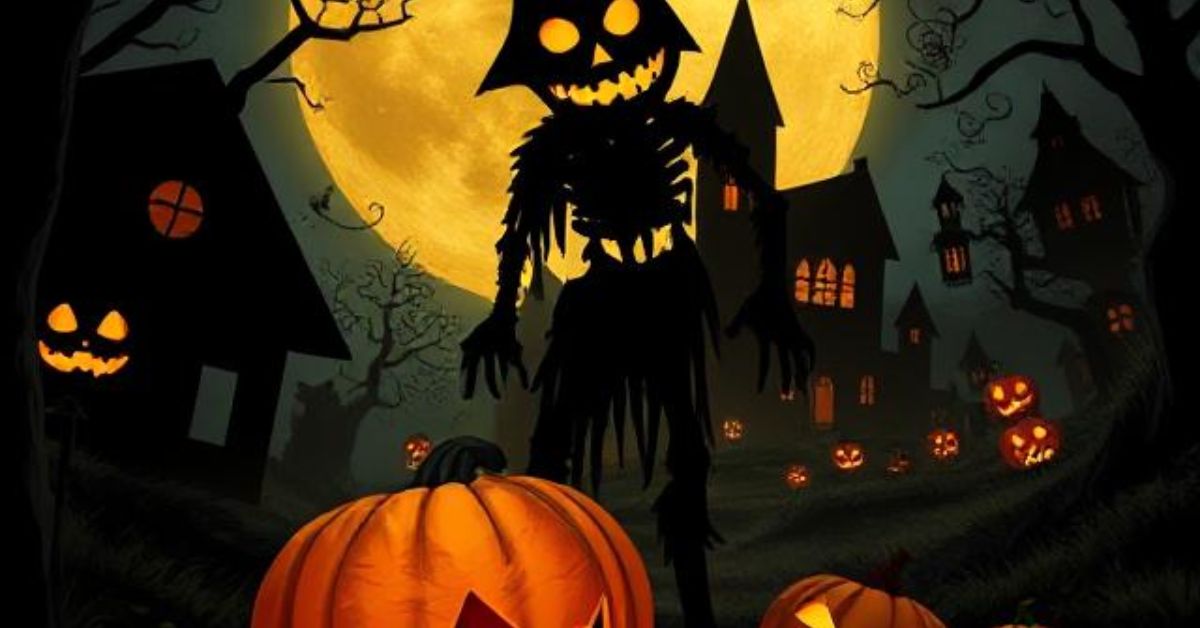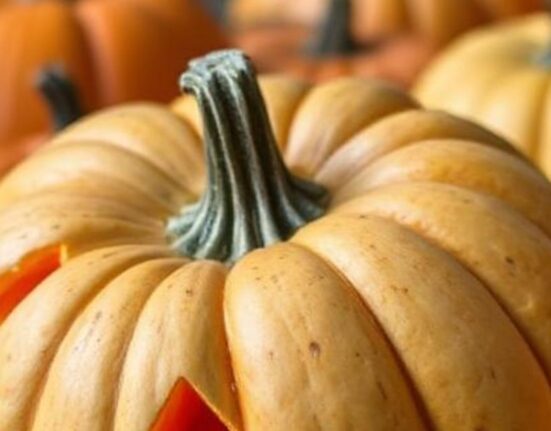The Jack-o’-lantern, with its flickering glow and mischievous grin, is an iconic symbol of Halloween, evoking spooky nights and festive autumn celebrations. Each year, millions carve pumpkins into eerie faces, placing them on porches to ward off spirits or to delight trick-or-treaters. But the history of this curious tradition is far richer and more complex than most realize, stretching back centuries and across continents. From ancient Celtic rituals to modern-day pumpkin patches, the Jack-o’-lantern has evolved through folklore, cultural shifts, and agricultural innovation. This essay explores the intriguing beginnings and changes of the Jack-o’-lantern, uncovering the myths, traditions, and historical forces that shaped it into the Halloween staple we know today.
What were jack-o-lanterns first made from
Jack-o’-lanterns were initially made from turnips, not pumpkins. This tradition began in Ireland and parts of Scotland, where people carved grotesque faces into large turnips, beets, or potatoes. These early jack-o’-lanterns were placed in windows or close to doorways to keep off evil spirits, particularly during the Celtic holiday of Samhain, which honors the harvest season’s conclusion. winter—a time believed to blur the line between the living and the dead.
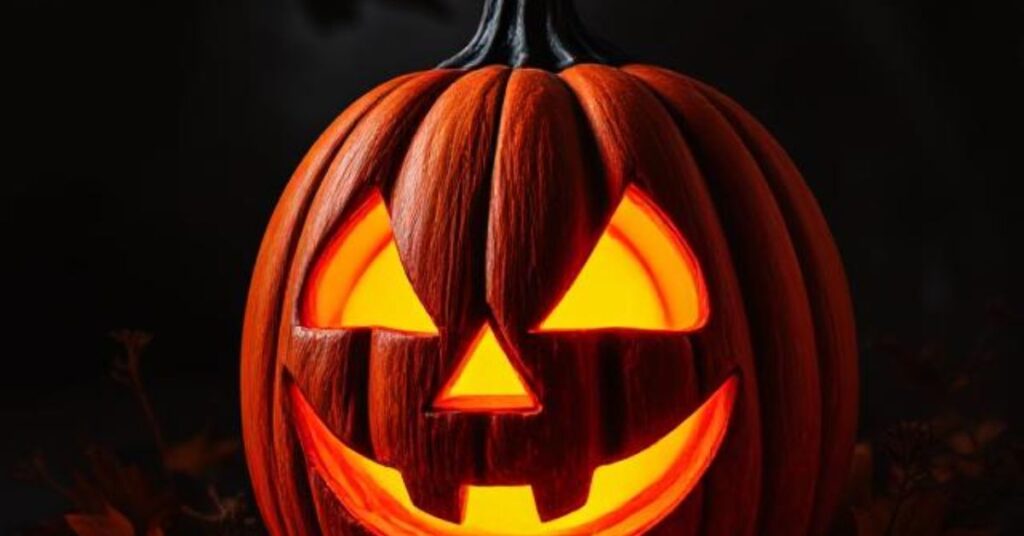
The name “jack-o’- When the custom was introduced to America by Irish immigrants, they found that pumpkins, Jack tricked the Devil multiple times and was denied entry into both Heaven-Heaven and Hell. As a result, he was doomed to wander. An ancient Irish legend concerning a man called Stingy The source is Jack. the source of the term “lantern.” As stated by This eerie image gave rise to the tradition of carving lanterns to represent his ghostly presence.
When Irish immigrants introduced the custom to America, The Fascinating Tale of Pumpkins & The Origin of Jack O’Lanterns they found that pumpkins—native to the New World—were larger, easier to carve, and more visually striking than turnips. Over time, pumpkins replaced turnips in Halloween celebrations, becoming the iconic jack-o’-lanterns we know today. The tradition has since grown into a beloved Halloween custom around the world.
Ancient Beginnings: The Celtic Roots
The story of the Jack-o’-lantern begins with the prehistoric Celts, who lived more than 2,000 years ago in what are today regions of Western Europe, Scotland, and Ireland. The Celts observed Samhain, a holiday that signifies the harvest season’s conclusion and winter’s arrival, typically around October 31st. Samhain was a liminal time when the boundary between the living and the spirit world was believed to blur, allowing spirits, fairies, and other supernatural beings to roam the Earth.
To protect themselves from malevolent spirits, the Celts lit bonfires and used carved lanterns to guide their way or ward off evil. These early lanterns were not made from pumpkins, which were unknown in Europe then but from turnips, beets, or other root vegetables. The Celts hollowed out these vegetables and carved simple designs, often placing a glowing ember or candle inside to create a portable light. These lanterns were practical, illuminating dark paths and symbolic, representing protection against the supernatural.
While no definitive evidence proves these lanterns were called “Jack-o’-lanterns,” carving vegetables into lanterns during Samhain laid the groundwork for the tradition. The Celts’ belief in spirits and the need for protective light during the dark winter months set a precedent that would later merge with Christian traditions and folklore.
The Legend of Stingy Jack: A Tale of Trickery
The name “Jack-o’-lantern” is closely tied to A folktale from Ireland about a man called Stingy Jack, a cunning but unscrupulous character whose story became entwined with Halloween traditions. According to legend, Jack was a notorious drunkard and trickster who roamed the Irish countryside. One day, he invited the Devil to have a drink with him, but true to his stingy nature, Jack refused to pay for the drinks. Instead, he convinced the Devil to turn himself into a coin to cover the tab. When the Devil complied, Jack pocketed the coin and set it next to a crucifix made of silver. Trapping the Devil and preventing him from transforming back.
Eventually, Jack freed the Devil but only after extracting a promise that the Devil would not claim his soul when he died. Years later, when Jack’s life of deceit caught up with him, he died, but neither Heaven nor Hell would take him. God refused him entry to Heaven due to his sinful ways, and the Devil, still bitter from Jack’s trickery, honored his promise not to take Jack’s soul but banished him to wander the Earth forever. The Devil mockingly tossed Jack a burning coal from Hell, which Jack placed inside a hollowed-out turnip to light his way as he roamed the night.
This tale of “Jack of the Lantern“ gave rise to the term “Jack-o’-lantern,“ which initially referred to the ghostly figure carrying a glowing turnip. Over time, the name came to describe the carved lanterns Irish villagers used during the fall to mimic Jack’s wandering light or scare off spirits. The story of Stingy Jack, with its blend of mischief, morality, and the supernatural, perfectly captures the eerie essence of Samhain and later Halloween.
The Christian Influence: All Hallows’ Eve
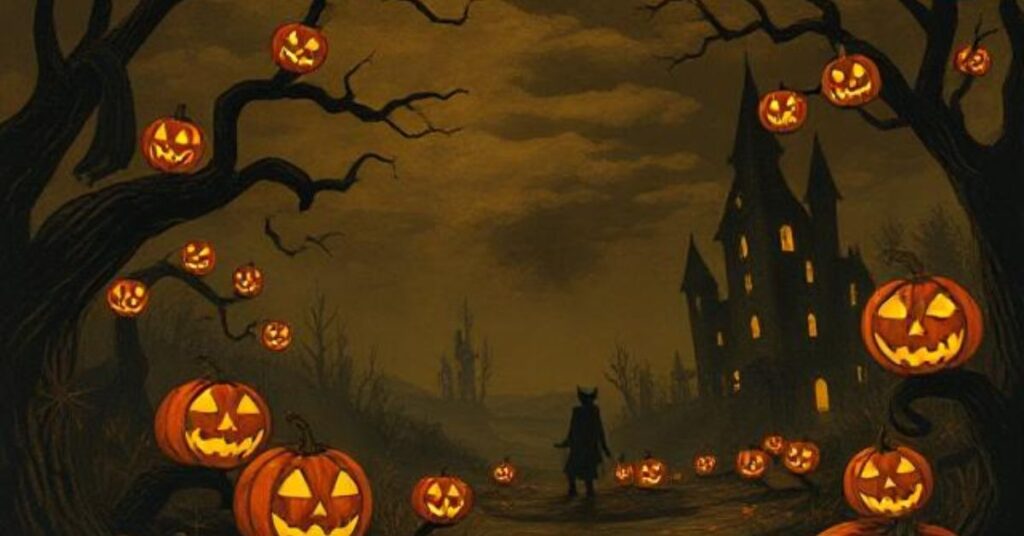
As Christianity spread across Europe, it absorbed and reshaped many pagan traditions, including those of Samhain. By the Middle Ages, the Catholic Church established November 1st as All Saints’ Day (All Hallows’ Day) to honor saints and martyrs. October 31st became All Hallows’ Eve, the precursor to modern Halloween. The Church encouraged practices like lighting candles to guide souls to Heaven, paralleling the Celtic use of lanterns to ward off spirits.
In Ireland, the tradition of carving turnip lanterns persisted, now imbued with Christian symbolism. These lanterns were sometimes placed in windows or carried during All Hallows’ Eve to represent souls in purgatory or to honor the dead. Understanding Food Costs and Modern Farming Practices The merging of Celtic and Christian beliefs created a unique cultural blend, with the Jack-o’-lantern bridging pagan and religious traditions. The carved lanterns retained their protective and spiritual significance, even as their designs grew more elaborate, often featuring grotesque faces to scare away demons or mischievous spirits.
The Great Pumpkin Migration: Jack-o’-lanterns in America
The Jack-o’-lantern as we know it today—a glowing, carved pumpkin—owes its existence to the transatlantic migration of Irish immigrants to North America in the 19th century, particularly during the Great Famine (1845–1852). Fleeing starvation and hardship, millions of Irish settlers brought their customs, including Halloween and the Jack-o’-lantern, to the United States.
Upon arriving in America, the Irish discovered pumpkins, a native crop that was larger, softer, and easier to carve than the turnips and beets they had used in Ireland. Pumpkins, which Indigenous peoples had cultivated for thousands of years, were already a staple of the American harvest season. The Irish quickly adopted pumpkins for their lanterns, finding them ideal for creating larger, more intricate designs. By the mid-19th century, the pumpkin Jack-o’-lantern had become a hallmark of Halloween celebrations in America.
The shift from turnips to pumpkins was more than a practical change; it marked a cultural transformation. Pumpkins were abundant and affordable, Modern Commercial Agriculture: making the tradition accessible to a broader population. The bright orange hue and round shape of pumpkins also lent themselves to creative carvings, from spooky faces to whimsical designs. As Halloween evolved from a religious and folkloric holiday into a community celebration, the pumpkin Jack-o’-lantern became a unifying symbol of autumn and festivity.
Halloween’s Rise and the Jack-o’-lantern’s Popularity
By the late 19th and early 20th centuries, Halloween in America was transforming into a secular, community-driven holiday. No longer solely a night of spiritual vigilance, it became an occasion for parties, pranks, and neighborhood gatherings. The Jack-o’-lantern, with its versatility and visual appeal, played a central role in this shift. Families and children began carving pumpkins as a creative activity, and the lanterns became decorations for homes, schools, and public spaces.
The commercialization of Halloween in the 20th century further cemented the Jack-o’-lantern’s status. By the 1920s, companies began producing Halloween-themed products, including candles, carving tools, and decorations. Magazines and newspapers published pumpkin-carving patterns, encouraging elaborate designs that ranged from witches and ghosts to political figures and pop culture icons. The Jack-o’-lantern became a canvas for self-expression, reflecting individual creativity and the broader cultural zeitgeist.
The rise of trick-or-treating in the mid-20th century also boosted the Jack-o’-lantern’s prominence. Carved pumpkins on porches signaled that a house was welcoming to costumed children, creating a visual shorthand for Halloween hospitality. Communities began hosting pumpkin-carving contests and festivals, further embedding the Jack-o’-lantern in American culture.
The Science and Art of Pumpkin Carving
The modern Jack-o’-lantern is as much a product of agricultural innovation as it is of tradition. In the 20th century, farmers and horticulturists began breeding pumpkins specifically for carving, prioritizing traits like uniform shape, thick walls, and smooth skin. Varieties like the “Howden“ pumpkin, developed in the 1960s, became the gold standard for Jack-o’-lanterns due to their size and durability.
Carving techniques have also evolved, with tools ranging from simple kitchen knives to specialized kits that include scoops, saws, and stencils. Artists and enthusiasts have pushed the boundaries of pumpkin carving, creating intricate sculptures and 3D designs that rival professional artworks. Some even use power tools or laser cutters to achieve precision, while others experiment with painting or etching to add texture and color.
The science of preserving jack-o-lantern origin has also advanced. Carved pumpkins are prone to rot, typically lasting only a few days before collapsing. However, soaking pumpkins in bleach solution, applying petroleum jelly to cut edges, or using LED lights instead of candles can extend their lifespan. These innovations have made it easier for people to enjoy their creations throughout Halloween.
The Jack-o’-lantern in Modern Culture
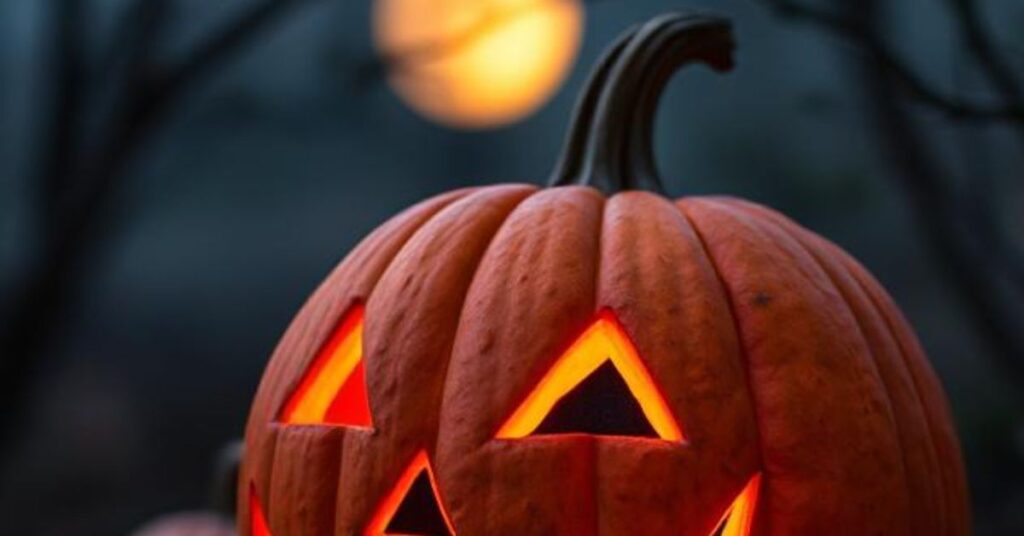
Today, the Jack-o’-lantern is a global symbol of Halloween, recognized far beyond its Celtic and American roots. It appears in films, advertisements, and social media, from the whimsical pumpkins of Charlie Brown to the menacing lanterns of horror movies. Pumpkin spice lattes and Jack-o’-lantern emojis have further embedded the pumpkin in popular culture, tying it to the broader autumn aesthetic.
The Jack-o’-lantern has also inspired festivals and competitions worldwide. Events like the Keene Pumpkin Festival in New Hampshire, where thousands of carved pumpkins are displayed, showcase the tradition’s enduring appeal. In recent years, the rise of social media has fueled a surge in creative carvings, with hashtags like #Jackolantern and #PumpkinCarving amassing millions of posts on platforms like Instagram and TikTok.
Yet, the Jack-o’-lantern remains rooted in its original purpose: to light the way and ward off darkness. Whether it’s a simple triangle-eyed pumpkin on a suburban porch or an elaborate masterpiece at a festival, the jack o lantern history continues to evoke the mystery and magic of Halloween.
Conclusion
The history of the history of jack o lanterns is a tapestry woven from ancient rituals, folklore, immigration, and cultural evolution. From the turnip lanterns of Celtic Samhain to the glowing pumpkins of modern Halloween, this tradition has endured centuries of change, adapting to new lands, beliefs, and technologies. The story of Stingy Jack, with his cursed wanderings, adds a layer of mythic charm, while the pumpkin itself reflects the ingenuity and creativity of those who embraced it.
As we carve our Jack-o’-lanterns each October, we participate in a tradition that connects us to our ancestors, the cycles of nature, and the universal human desire to find light in the darkness. The Jack-o’-lantern is more than a Halloween decoration; it symbolizes resilience, imagination, and the enduring power of stories. So, the next time you scoop out a pumpkin and carve a grinning face, take a moment to appreciate the rich history glowing within.
FAQ
What is the origin of the Jack-o’-lantern?
The Jack-o’-lantern tradition dates back to Celtic Samhain when turnips were carved into lanterns to ward off spirits. The tradition evolved in Ireland with the legend of Stingy Jack.
Why are pumpkins used for Jack-o’-lanterns?
Irish immigrants in America adopted pumpkins, native and easier to carve than turnips, in the 19th century. Their size and availability made them ideal for creating larger, more intricate Halloween lanterns.
Who was Stingy Jack?
Stingy Jack, an Irish folktale figure, tricked the Devil and was doomed to wander with a turnip lantern. His story inspired the term “Jack-o’-lantern” for carved vegetable lanterns.
How did Christianity influence the Jack-o’-lantern?
Christianity merged Samhain with All Hallows’ Eve, using carved lanterns to honor the dead or ward off evil. Turnip lanterns symbolized souls in purgatory during this religious transition.
How has pumpkin carving evolved?
Modern pumpkin carving uses specialized tools, stencils, and preservation techniques like bleach. Breeding programs created carving-friendly pumpkins, while artists now craft intricate designs, elevating Jack-o’-lanterns into seasonal art.







